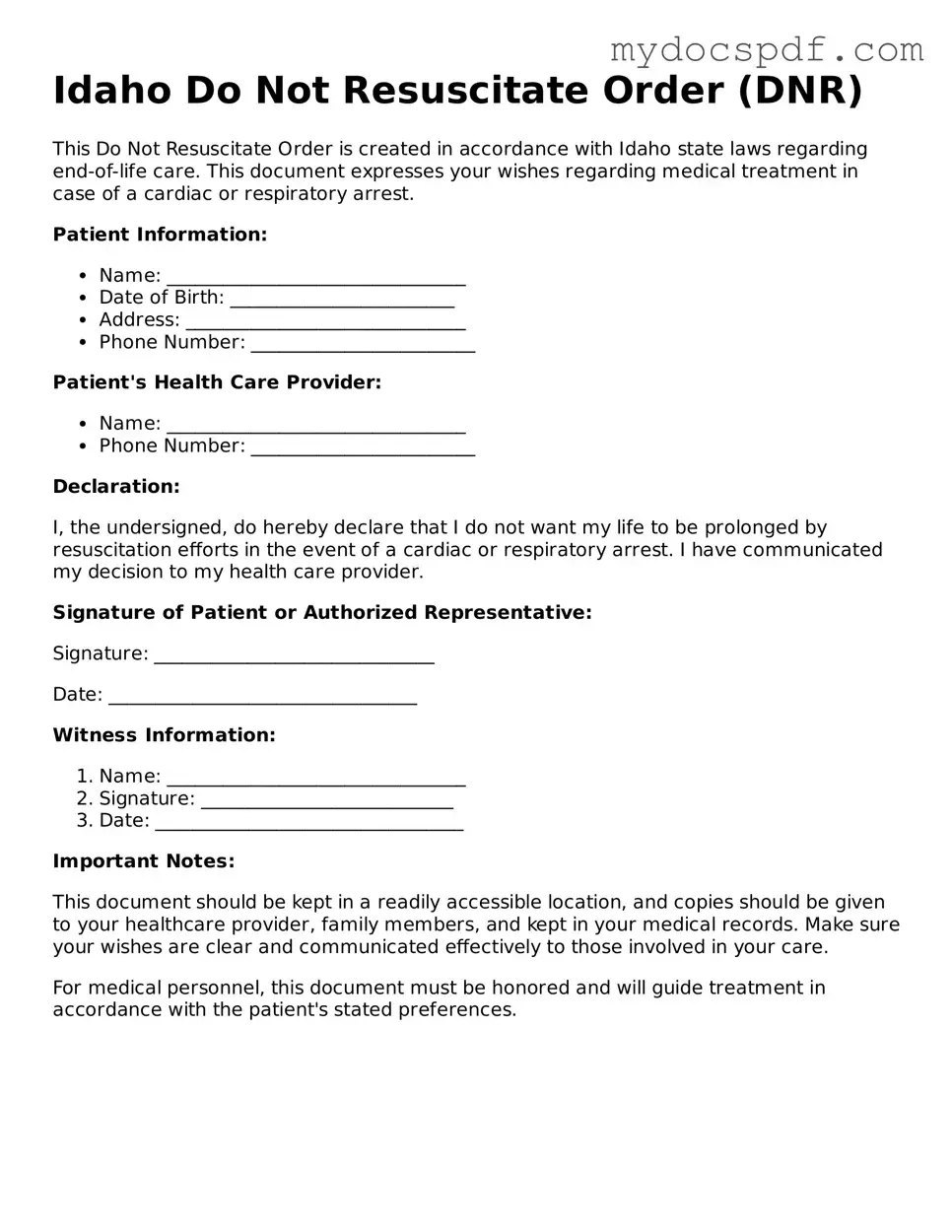Idaho Do Not Resuscitate Order (DNR)
This Do Not Resuscitate Order is created in accordance with Idaho state laws regarding end-of-life care. This document expresses your wishes regarding medical treatment in case of a cardiac or respiratory arrest.
Patient Information:
- Name: ________________________________
- Date of Birth: ________________________
- Address: ______________________________
- Phone Number: ________________________
Patient's Health Care Provider:
- Name: ________________________________
- Phone Number: ________________________
Declaration:
I, the undersigned, do hereby declare that I do not want my life to be prolonged by resuscitation efforts in the event of a cardiac or respiratory arrest. I have communicated my decision to my health care provider.
Signature of Patient or Authorized Representative:
Signature: ______________________________
Date: _________________________________
Witness Information:
- Name: ________________________________
- Signature: ___________________________
- Date: _________________________________
Important Notes:
This document should be kept in a readily accessible location, and copies should be given to your healthcare provider, family members, and kept in your medical records. Make sure your wishes are clear and communicated effectively to those involved in your care.
For medical personnel, this document must be honored and will guide treatment in accordance with the patient's stated preferences.
